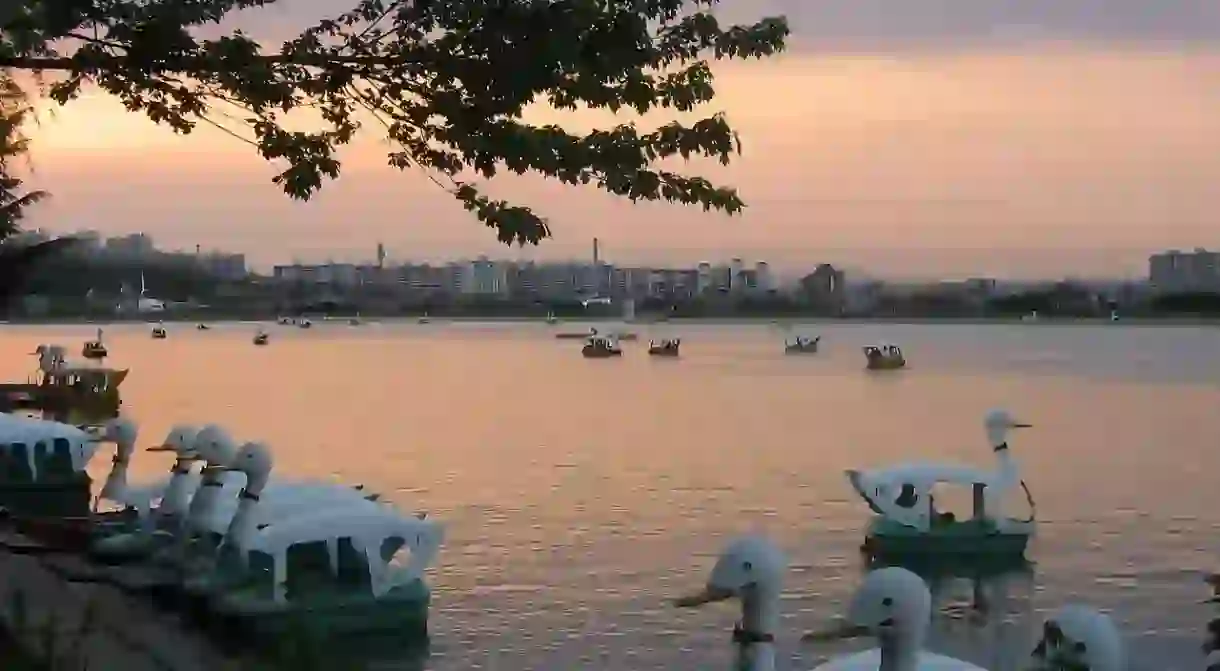12 Reasons Why You Should Visit Daegu

Many would agree that Daegu is the living embodiment of South Korea’s traditional culture and contemporary charm. There are a number of reasons to visit this vibrant city; here are 12 of them.
Green spaces offer rest and relaxation.
Park
It’s the hub of South Korea’s textile industry
Since the late 1990s, Daegu has been the hub of South Korea’s textile and clothing manufacturing industries, with industry-related exports equaling approximately USD 10 billion. To promote the growth of the local industry, the city showcases numerous fashion exhibitions including the Daegu Fashion Fair and Preview in Daegu. The Daegu Textile Museum, meanwhile, provides unique insight into the past, present, and future of textiles.
Traditional market culture thrives
Market, Korean

There’s a body painting festival
Held in late summer at Duryu Park, the annual Daegu International Bodypainting Festival (DIBF) is an event to be experienced. Here, artists from all corners of the globe gather to show off their talents. The event culminates in the body painting competition, where nearly nude models are transformed into incredible works of art in just a few hours.
It will help you to find your Zen
Daegu is home to a number of important Buddhist sites, frequented by both practitioners of the religion and non-Buddhists alike. Among them, Donghwa Temple on Palgong Mountain stands out with its distinctive architectural details that create a harmony between the building and its surroundings. Haein Temple, meanwhile, is one of the most significant sites in the country, as it houses the Tripitaka Koreana, the oldest and most complete collection of Buddhist scriptures in the world.

There’s a festival devoted to chicken and beer
One of the best ways to cool down in Daegu, Korea’s hottest city, is to gorge on chimaek, the famous Korean culinary combination of chicken and beer. The Daegu Chicken & Beer Festival, which is held annually in July, provides visitors with the opportunity to experience this increasingly popular Korean gastronomic trend. Some 100 participating vendors serve up the country’s best recipes, while K-pop concerts keep audiences entertained.
You can taste some of the best coffee in the country
Daegulites really love their coffee. So much so that the city has the greatest number of coffee shops per capita in the entire country, not to mention it hosts the Daegu International Coffee Fair every autumn. There’s even an entire street dedicated to the beverage. Lined with Daegu’s top independent cafes, the quaint alley boasts a youthful atmosphere and lures passersby in with the rich aromas of roasting coffee.

It’s rooted in history
Building, Church, Museum
It’s home to one of Korea’s biggest and oldest oriental medicine markets
Market
It’s full of quirks
Daegu most certainly has a quirky side that can be experienced through its unique festivals and attractions. King Sejong’s umbilical cord shrine, for example, houses the placentas and umbilical cords of his children (this was believed to bring good fortune to the royal progeny). The city also boasts other quirky destinations such as a gallery dedicated to velvet, a sci-fi themed restaurant and a Harry Potter cafe.
It’s simultaneously modern and traditional
While Daegu has all the conveniences and amenities of a modern metropolis, it’s also rooted in tradition, as evidenced by locales such as Otgol Village. This tranquil community is made up of some 20 hanok (traditional Korean homes) that have been owned by the Gyeongju Choi clan for nearly 400 years. Although most are not original and those that are have been restored over time, they provide an interesting look into the country’s past.

The Dalgubeol Lantern Festival is simply breathtaking
To celebrate Buddha’s Birthday, the Dalgubeol Lantern Festival is held annually at the Daegu Duryu Park. Here, thousands of illuminated lanterns are set afloat above the park grounds, making for a rather magnificent scene.













